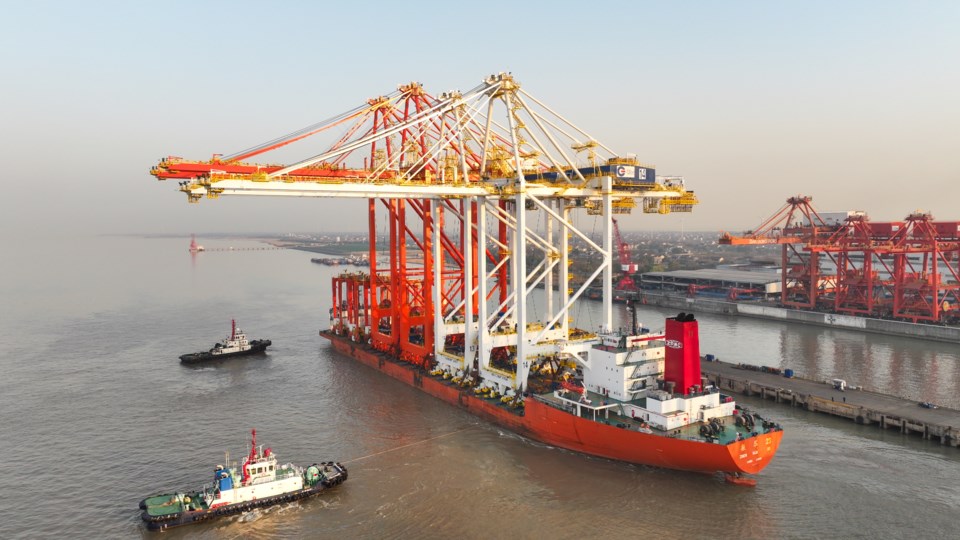Two lumbering leviathans with Herculean strength have arrived from across the Pacific, and will be inching into Global Container Terminals Deltaport on Saturday.
The behemoths, which are part a $170-modernization project, can move mountains of containers from ships to rail cars and on to a waiting continent.
The pair of state-of-the-art structures, 52 metres high, were made in Shanghai, China, and are the first of six that GCT is bringing over in the next two years.
The ship-to-shore cranes fit into the Megamax category, which in maritime terms, is the biggest of the big.
“These are some of the largest, most technologically advanced cranes in the world. And they’ll be able to handle the largest vessels in the world and that’s what we call the Megamax crane,” explained Daniel Howell, chief operating officer with GCT. “Which is really good for us. It gives us a tremendous amount of flexibility and whatever our customers want to throw at us, we’re going to be able to manage that.”
The new cranes are the same height as the two tallest cranes currently at the port and will be able to handle any ship at any of the three berths at GCT Deltaport.
“Which is a real competitive advantage for us,” Howell said.
According to a GCT news release, when the crane-replacement project is completed, there will be eight Megamax cranes and four Super Post-Panamax cranes at the port, so the total number of cranes at Deltaport remains the same.
The company also wants to invest ahead of demand and maintain competitiveness of Canada’s largest marine container terminal, the release said.
The new cranes replace those that are 25 years old and are electric powered, with LED lighting, and regenerative drives that produce electricity when gravity allows.
Howell said the new cranes will improve safety, operations and efficiency.
He said that when technological advances are made, safety is a major focus, followed by environmental goals.
“Anytime … we … introduce new technology, the first lens we look at it through is, is this going to improve our health and safety on the terminal?”
The investment allows the port to grow its capacity and volume without expanding the terminal, Howell said. Noise, reduced light glare away from the terminal and implemention in a phased approach will minimize impact.
“When we implement these projects, it’s invisible to our customers and it’s invisible to the communities that we operate in.”
The new cranes will be operated remotely, by video camera, in the same way rail cars are now loaded at the terminal.
Two other cranes are also ready be converted to remote operation.
“From a safety perspective, it’s a much safer operation,” he said.
Employees were also involved in designing the cranes to be safer.
The cranes moved across the ocean fully assembled on a specially designed ship. The steel structure is Chinese made but the operating systems are made in Sweden.
The next four new cranes arrive at Deltaport over the next two years.
The project follows other recent upgrades.
In 2018, GCT spent $310 million on rail expansion, with another $39 million planned for new yard cranes.
“We’re really good at doing these types of projects,” said Howell.
Deltaport is the company’s largest, as well the country’s largest marine container port, and also has the world’s largest on-dock rail with 8,334 metres of tracks.
GCT is Canadian company based in Â鶹´«Ã½Ó³»for more than a 100 years. The new technology keeps the port competitive, Howell said.
”We’re just a small Canadian company doing big things. “I think there’s a tremendous amount of uncertainty in the world and we’ve said it from the very beginning, we have to be that safe harbour. We have to be that stable terminal operator,” providing a gateway to Canada, he added.


